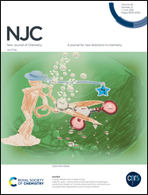Sol–gel synthesis of Dictyophora-shaped hierarchically porous Mn2SnO4/C materials as anodes for Li-ion batteries†
Abstract
Tin-based materials are promising anode candidates profiting from their high theoretical capacities compared with that of commercial graphite to enhance energy efficiency and power capabilities for secondary batteries. Herein, Dictyophora-shaped hierarchically porous Mn2SnO4/C composite materials were facilely prepared by a sol–gel process accompanied by phase separation, followed by a controllable two-step heat treatment. The heat treatment temperature and atmosphere have an important effect on the phase composition, pore structure and electrochemical performances of tin-based materials. The crystalline Mn2SnO4/C composite can be obtained via a two-step heat-treatment (first in air and then in argon), whereas a mixture of Mn3O4 and SnO2 will be achieved through a one-step heat-treatment in air. The synthesized hierarchically porous Mn2SnO4/C composite has 3D bicontinuous skeletons and a hierarchical micro–meso–macropore structure with wide pore size distribution, and has high reversible capacity (939.9 mA h g−1 at 200 mA g−1), and great rate retention (36.5% capacity retention from 0.1 to 10 A g−1), as well as good cycle stability, delivering a high specific capacity of 784.1 mA h g−1 at 1 A g−1 after 500 cycles. The enhanced performances can be attributed to the hierarchical pore structure, which not only assists electron and Li-ion transportation but also creates more active sites. The hierarchically porous electrode design strategy has potential in high-capacity and fast-rate energy storage devices.



 Please wait while we load your content...
Please wait while we load your content...